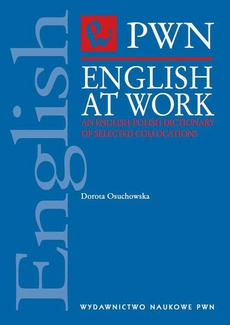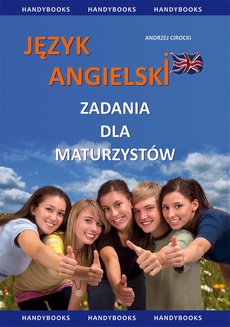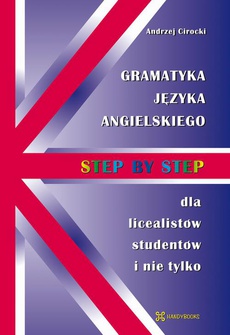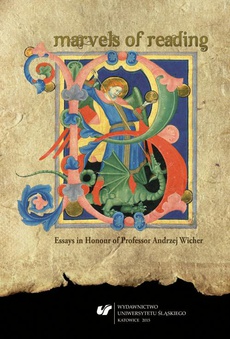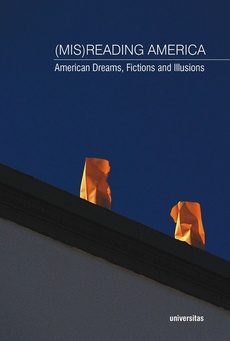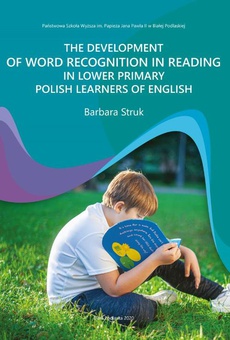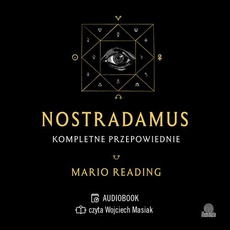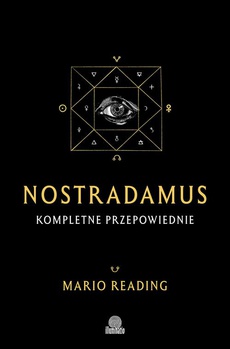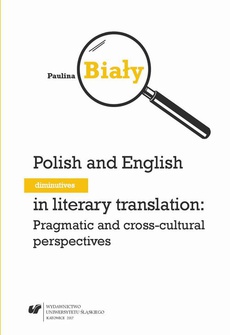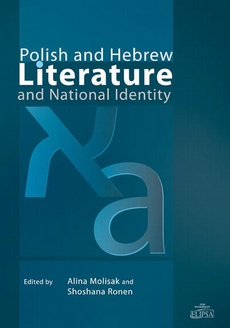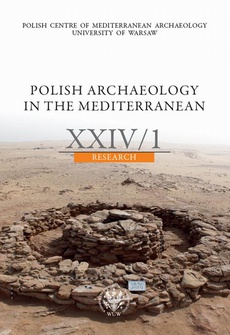POLECAMY
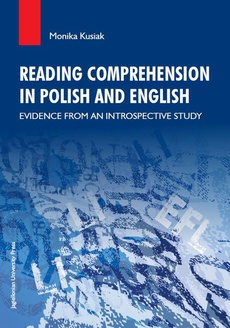
-33%
Reading Comprehension in Polish and English
Evidence from an Introspective Study
Autor:
Format:
pdf, ibuk
This book is about reading. Throughout the book, the author explains the complexity of the dual-language involvement of FL/L2 reading by showing how L1 and FL/L2 factors interplay in FL/L2 reading. The main aim of the book is to explore reading in English in the foreign/second language context as a cross-linguistic phenomenon and to present the results of a think-aloud study which investigated reading in Polish as the L1 and English as the FL of Polish learners of English. The project consisted of six stages, each focussing on a different aspect of reading. Thus, the following was explored: reading strategies, problems and solutions, the way the subjects constructed their representations of the texts, the students’ individual patterns of developing comprehension and effectiveness in identifying the main ideas. The findings revealed both differences and similarities between the subjects’ reading in Polish and their reading in English. The book offers implications for further research and elucidates the usefulness of think-aloud protocols in foreign language instruction.
| Rok wydania | 2013 |
|---|---|
| Liczba stron | 238 |
| Kategoria | Język angielski |
| Wydawca | Wydawnictwo Uniwersytetu Jagiellońskiego |
| ISBN-13 | 978-83-233-3513-9 |
| Numer wydania | 1 |
| Język publikacji | polski |
| Informacja o sprzedawcy | ePWN sp. z o.o. |
Ciekawe propozycje
Spis treści
| ACKNOWLEDGEMENTS | 11 |
| INTRODUCTION | 13 |
| PART I: ESSENTIAL COMPONENTS OF READING – A CROSS-LINGUISTIC APPROACH | 15 |
| 1. FL/L2 reading – a language problem or a reading problem? | 16 |
| 1.1. Th e Linguistic Th reshold Hypothesis | 16 |
| 1.2. Th e Linguistic Interdependence Hypothesis | 17 |
| 1.3. Consolidating the Linguistic Th reshold and the Linguistic Interdependence Hypotheses | 18 |
| 2. Lower-level language processing – word and sentence level | 19 |
| 2.1. Phonological processing | 20 |
| 2.1.1. Th e importance of phonological decoding in L1 reading | 20 |
| 2.1.2. Phonological processing in diff erent orthographic systems | 20 |
| 2.1.3. Phonological processes in reading English as L1 and Polish as L1 | 21 |
| 2.1.4. Cross-linguistic variations: Th e infl uence of L1 orthographic background on FL/L2 reading | 22 |
| 2.2. Word recognition | 23 |
| 2.2.1. Th e role of phonological mediation in word recognition | 23 |
| 2.2.2. Word recognition in the rauding theory | 25 |
| 2.3. Vocabulary knowledge | 26 |
| 2.3.1. Th e importance of vocabulary knowledge in L1 and FL/L2 reading | 26 |
| 2.3.2. Cross-linguistic studies | 27 |
| 2.4. Sentence processing | 28 |
| 2.4.1. Factors infl uencing sentence processing | 28 |
| 2.4.2. Sentence processing in the competition model of language acquisition | 29 |
| 2.4.3. Cross-linguistic variations in sentence processing | 30 |
| 3. Higher-level language processing – discourse level and text structure knowledge | 32 |
| 3.1. Discourse processing | 32 |
| 3.1.1. Th e Kintsch model | 32 |
| 3.1.2. Mental models | 33 |
| 3.1.3. Studies on L1 and FL/L2 discourse comprehension | 34 |
| 3.2. Coherence development | 35 |
| 3.2.1. Coherence in the psychological perspective | 35 |
| 3.2.2. Contrastive studies | 35 |
| 3.3. Establishing coherence through inferencing | 36 |
| 3.3.1. Elaborative and bridging inferences | 37 |
| 3.3.2. Studies on coherence building in L1 and FL/L2 reading | 37 |
| 3.4. Text structure and comprehension | 38 |
| 3.4.1. Narrative texts | 39 |
| 3.4.1.1. Story grammar | 39 |
| 3.4.1.2. Causal network models | 40 |
| 3.4.2. Expository texts – focus on the text structure | 41 |
| 3.4.2.1. Meyer’s system | 41 |
| 3.4.2.2. Contrastive studies | 42 |
| 3.4.3. Expository texts – focus on the reader’s comprehension | 43 |
| 3.4.3.1. Th e Gernsbacher model | 43 |
| 3.4.3.2. Britton’s grammar of exposition | 47 |
| 3.4.3.3. Inducing insights by exposition | 50 |
| 3.5. Contrastive rhetoric | 51 |
| 3.5.1. Pioneering studies | 52 |
| 3.5.2. European languages | 52 |
| 3.5.3. Th e Polish language | 54 |
| 3.5.4. Summary | 56 |
| 3.5.5. Implications for FL/L2 reading | 57 |
| 4. Language-independent factors | 58 |
| 4.1. Background knowledge | 58 |
| 4.1.1. Conceptual knowledge | 59 |
| 4.1.2. Domain knowledge | 59 |
| 4.1.3. Cultural knowledge | 60 |
| 4.1.4. Th e relationship between background knowledge and FL profi ciency | 61 |
| 4.1.5. Teaching implications | 62 |
| 4.2. Metalinguistic knowledge | 62 |
| 4.2.1. Defi nition of the term | 62 |
| 4.2.2. Interrelations among metalinguistic knowledge, metalinguistic awareness and metalinguistic ability | 64 |
| 4.2.3. Metalinguistic phenomena in bilingual learners’ reading | 64 |
| 4.2.4. Summary | 66 |
| 4.3. Metacognition | 67 |
| 4.3.1. Various conceptions of metacognition | 67 |
| 4.3.2. Metacognition of L1 readers | 68 |
| 4.3.3. Metacognition of FL/L2 readers | 69 |
| 4.3.4. Metacognition in the Bernhardt constructivist reading model | 70 |
| 4.3.5. Cross-linguistic studies | 71 |
| 4.3.6. Eff ects of metacognitive training | 73 |
| 5. Summary of the fi ndings and implications for future research | 74 |
| 5.1. Vocabulary, syntax and discourse | 75 |
| 5.1.1. Th e role of L1 in FL/L2 reading | 75 |
| 5.1.2. Diff erences between L1 and FL/L2 reading | 75 |
| 5.1.3. Interlingual transfer | 76 |
| 5.2. Metacognition, metalinguistic knowledge and background knowledge | 78 |
| 5.3. Suggestions for future research | 79 |
| 5.3.1. A call for a unifi ed theory of reading | 79 |
| 5.3.2. Th e need for more cross-linguistic reading research in Poland | 80 |
| PART II: THINK-ALOUD READING COMPREHENSION STUDIES | 83 |
| 1. Th ink-aloud methodology | 83 |
| 1.1. Aspects of reading investigated by think-aloud methodology | 83 |
| 1.2. Using protocol analysis in theory building and research | 85 |
| 1.3. Th eoretical underpinnings of think-aloud methodology | 85 |
| 1.4. Ericsson and Simon’s model and text processing | 87 |
| 1.5. General methodological guidelines for think-aloud research | 88 |
| 2. A review of selected studies in the L1 reading context | 92 |
| 2.1. Reading as a problem-solving process | 94 |
| 2.2. Reading as a process of constructing a text model | 94 |
| 2.3. Evaluating text understanding | 95 |
| 2.4. Strategies used by expert readers | 96 |
| 2.5. Diff erences between expert and novice readers | 97 |
| 2.6. A summary of research fi ndings | 99 |
| 2.7. Conclusions – reading in L1 | 102 |
| 2.7.1. Th e relationship between the think-aloud method and reading | 102 |
| 2.7.2. Th e view of reading and the reader created by the studies | 104 |
| 3. A review of selected studies in the FL/L2 reading context | 106 |
| 3.1. FL/L2 readers’ approach to the text | 107 |
| 3.2. Strategies used by successful and unsuccessful readers | 108 |
| 3.3. Monitoring comprehension by profi cient and less profi cient readers | 109 |
| 3.4. Factors that make texts diffi cult to read | 110 |
| 3.5. Conclusions – reading in FL/L2 | 110 |
| 3.5.1. Skilled vs. less skilled FL/L2 readers | 111 |
| 3.5.2. FL/L2 reading vs. L1 reading | 112 |
| 4. A review of selected comparative studies in L1 and FL/L2 | 113 |
| 4.1. Processing strategies in L1 and FL/L2 reading | 115 |
| 4.2. Interpretation problems of L1 and FL readers | 117 |
| 4.3. Test-taking strategies in L1 and FL reading | 117 |
| 4.4. Transfer of reading processes from L1 to FL | 118 |
| 4.5. Conclusions – reading in L1 and FL/L2 | 119 |
| PART III: THE THINK-ALOUD STUDY | 125 |
| 1. Description of the study | 125 |
| 1.1. Th e goal of the study | 125 |
| 1.2. Subjects | 126 |
| 1.3. Texts | 126 |
| 1.4. Tasks | 127 |
| 1.5. Directions to subjects | 128 |
| 1.6. Transcription process | 128 |
| 1.7. Process of analyzing the protocols | 129 |
| 2. Analysis of students’ strategies: Stage 1 | 130 |
| 2.1. Research questions | 130 |
| 2.2. Results | 130 |
| 2.3. Discussion | 140 |
| 2.4. Conclusions | 144 |
| 3. Analysis of problems and solutions: Stage 2 | 145 |
| 3.1. Research questions | 145 |
| 3.2. Procedures applied in the analysis | 146 |
| 3.3. Results | 146 |
| 3.3.1. Problems and solutions applied in reading in Polish and English – a comparison of comprehension processes | 146 |
| 3.3.2. How did the students cope with vocabulary problems inreading the English text? | 150 |
| 3.3.3. How did the students cope with diffi culties in understanding concepts? | 151 |
| 3.4. Conclusions about the students’ comprehensionof the text | 154 |
| 4. Analysis of propositions: Stage 3 | 156 |
| 4.1. Research questions | 156 |
| 4.2. Results | 157 |
| 4.2.1. Identifying diff erent types of propositions | 157 |
| 4.2.2. Th e role of predictions in understanding the text | 160 |
| 4.2.3. Th e role of pictures in understanding the text | 163 |
| 4.2.4. Strategies the students used to evaluate their comprehension | 164 |
| 4.3. Conclusions | 165 |
| 5. Students’ idiosyncratic patterns of constructing comprehension: Stage 4 | 166 |
| 5.1. Research questions | 166 |
| 5.2. Results and conclusions | 166 |
| 6. Evaluating the readers’ comprehension – how well the subjects understood the texts: Stage 5 | 169 |
| 6.1. Research focus and analysis of results | 169 |
| 6.2. Conclusions | 173 |
| 7. Th e interview with the students: Stage 6 | 174 |
| 7.1. Research focus | 174 |
| 7.2. Results | 174 |
| 7.2.1. Students’ individual styles of reading in relation to the Polish and the English text | 174 |
| 7.2.2. Diff erences between reading in Polish and reading in English | 176 |
| 7.3. Conclusions | 178 |
| 8. Evaluation of the study | 179 |
| 8.1. General comments on the design of the study | 179 |
| 8.2. Evaluation of the reliability and validity of the study | 180 |
| 8.3. Triangulation | 182 |
| 8.4. Limitations of the study | 185 |
| 9. Implications of the fi ndings | 189 |
| 9.1. Implications for further research | 189 |
| 9.2. Teaching implications | 191 |
| CONCLUDING SUMMARY | 195 |
| APPENDICES | 199 |
| APPENDIX 1. | 199 |
| APPENDIX 2. | 201 |
| APPENDIX 3. | 211 |
| BIBLIOGRAPHY | 215 |
| INDEX | 235 |





